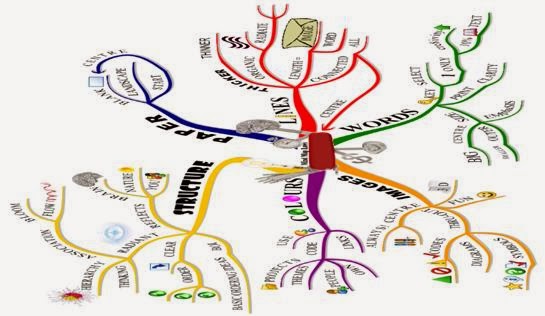One idea in psychology is that learning takes place by the
assimilation and accommodation of new concepts and propositions into existing
concept propositional frameworks held by the learner (Ausubel 1963, 1978).
Piaget (1970) explains that an individual from childhood builds mental
maps/concepts/schemes for understanding and responding to the physical
experience in his environment. The term ‘schema’ is widely used in cognitive
psychology, as ‘psychological constructs that are postulated to account for the
molar forms of human generic knowledge’ (Brewer, 1999). More familiar to
teachers is Buzan’s (2004) Mind Map developed in the 1960s.
He explains it as ‘a
powerful graphic technique, which provides a universal key to unlock the
potential of the brain. It harnesses the full range of cortical skills – word,
image, number, logic, rhythm, colour and spatial awareness – in a single,
uniquely powerful manner. In so doing, it gives you the freedom to roam the
infinite expanses of your brain.’
When constructing a Mind Map the basic word or image is placed centrally
and this triggers creative thoughts radiating from it. Curved lines symbolise
these branches of thoughts, as the brain prefers organic and not rigid
structures. The thickness of these branches indicates the importance of the
idea linking with the central image. Each association can trigger off further
ideas and links, which can cascade to infinity. (Buzan 2001)
‘Mind Maps are
colourful, spatial learning tools. They are brilliant route maps for memory
allowing you to organise facts and thoughts in such a way that the brain’s
natural way of working is engaged right from the start. This means that
remembering and recalling the information later is far more easy and reliable
than when using traditional note-taking techniques’. (Buzan 2000, pp. xxiii
– xxiv)
Thus, links can be made in all directions leading to a
360-degree map. Buzan advocates the use of colours and pictures, with thicker
lines denoting stronger links found at the heart of the map. Primarily the map
is unique to each individual’s thinking process and is for personal use. As new
ideas / concepts are introduced to the individual they will be assimilated into
the knowledge structure and allow the person to make sense of the new learning.
This is also connected to the idea of Ausubel’s assimilation of new concepts
and propositions into existing concept and propositional frameworks held by the
learner.
Buzan’s mind map from his Mind Map Gallery
Books by Buzzan -
Buzan T, 2000, Head First, Thorsons, London.
Buzan T, 2001, Head Strong, Thorsons, London.
Mind Map and
Mind Mapping – a good site summarising the information
How to
maximise your Brain power by Tony Buzzan
How to make mind map is an
informative video
Mind
maps make you Smarter by Tony Buzzan


No comments:
Post a Comment